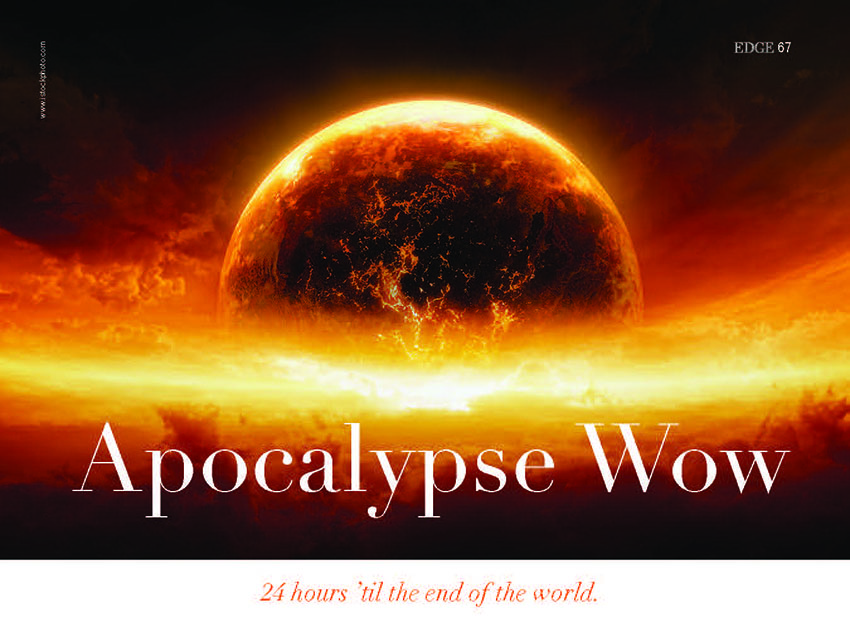24 hours ’til the end of the world.
We are all guilty of taking our planet for granted. Admit it, your family would much rather spend a Saturday afternoon flaked out in the den watching Netflix than badgering your Senator about climate change, protesting a local polluter, or picketing a nuclear plant. Which is why I became interested in finding a way to gain a greater appreciation for our precious little blue marble without actually leaving the sofa. Being a child of both Hollywood and Madison Avenue, the solution came easily: a 24-hour, all-hands-on-deck family binge-watch comprised entirely of movies about the end of the earth. For me, the challenge wasn’t staying awake for 24 hours, but narrowing down my picks to a dozen or so.
I highly recommend this exercise. Families have such easy access to so many movies nowadays that we tend to overlook what makes a picture worth watching: the story, dialogue, individual and ensemble performances, cinematography and director’s realization of his or her vision. I found this to be especially true in end-of-the-world scenarios, because of how easy it is to be seduced by special effects.
These are my picks—in no particular order, but grouped by category. If you spot an unfamiliar title, don’t write it off; you’d be missing the entire point of this article. Instead, think of it as my gift to you. And, if you like, think of me as a Friend for the End of the World…which, by the way, did not make my list.
BIG BANGS
There are any number of ways to destroy the planet, but most movies spare us the gory details. These three leave little doubt as to the fate of the earth…

Paramount Pictures Corp.
When Worlds Collide • 1951
The first Technicolor spectacular Sci-fi end-of-the-world picture, winner of the 1951 Oscar for Special Effects. Produced by the legendary George Pal, who went on to make the original screen adaptations of H.G. Wells’s The War of the Worlds and The Time Machine. When Worlds Collide is a triumph of postwar retro futurism—devoid of computer graphics, chock full of hand-crafted scale miniatures and background mattes in static and soothingly slow panning/zooming shots. Wait, I know that guy! Keep an eye peeled for Hayden Roarke (Dr. Bellows from I Dream of Jeannie) as the astronomer who discovers the imminent collision.
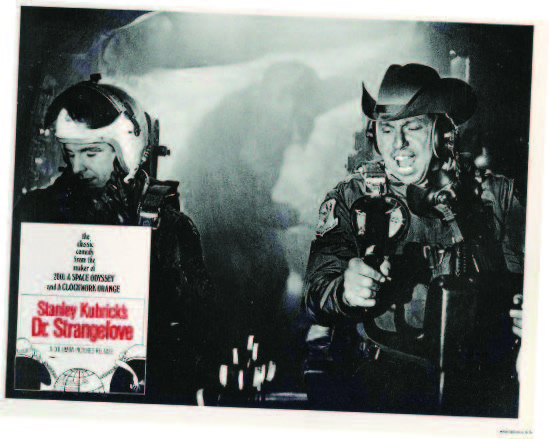
Columbia Pictures
Dr. Strangelove (Or How I Learned to Stop Worrying and Love the Bomb) • 1964
On the top of everyone’s doomsday list. Nominated for four Oscars (Best Picture, Screenplay, Director, and Actor in a Leading Role). Stanley Kubrick directs Peter Sellers playing three separate characters, as well as George C. Scott, Sterling Hayden, Slim Pickens, Keenan Wynn, and James Earl Jones in a genius screenplay he wrote with Terry Southern (Easy Rider) and Peter George (Fail-Safe). The film was based on Two Hours to Doom, written by George. Maybe the best black comedy ever made? Apocalyptically hilarious.
Melancholia • 2011
Lars Von Trier’s idiosyncratically Nordic interpretation of When Worlds Collide, by way of Jean Genet’s The Maids and Ingmar Bergman’s Cries and Whispers. Got all that?Charlotte Gainsbourg (the lead actress of Von Trier’s last three pictures) is off-the-charts brilliant, and Jersey Girl Kirsten Dunst gives maybe the best performance of her career, winning the Best Actress award at the Cannes Film Festival. Charlotte Rampling and John Hurt play the parents of the two sisters, Claire and Justine, in the days before a rogue planet smashes into earth. Wait, I know that guy! Udo Kier, who portrays the wedding planner, starred in the title role of Andy Warhol’s Dracula.
JUST A MATTER OF TIME
I’ve resisted the temptation to heap a bunch of dystopian dramas into this category, instead opting for stories where, clearly, mankind is about to blink out of existence…
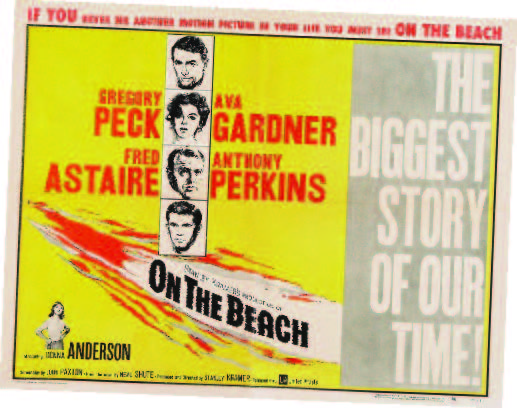
Lomitas Productions/United Artists
On the Beach • 1959
The other side of the Dr. Strangelove coin, the film was adapted from the 1957 best-selling novel by Nevil Shute. World War III has happened. Australia remains temporarily unscathed, but the fallout is headed Downunder and the government is distributing suicide pills and lethal injections. The lone surviving American submarine, captained by Gregory Peck, is sent on a desperate mission. Stanley Kramer directs Peck and Ava Gardner, Fred Astaire, Anthony Perkins and Donna Anderson (who worked for Kramer a year later in Inherit the Wind). For my fellow car crazies, the scenes of Astaire competing in the last Aussie Grand Prix before the lethal fallout arrives is on par with those of Kirk Douglas in The Racers (1955). On the Beach makes my list (and those of many other critics) of the 100 best pictures ever made; class-AAA grade American cinema for the brainy and ethical. Spoiler Alert! If you don’t cry at the “Waltzing Matilda” finale, you just aren’t human.
Soylent Green • 1973
Charlton Heston and the end of the world seem to have been made for each other. In this classic, he’s dealing with humans, not apes. The story unfolds in the not-too-distant future, when overpopulation and pollution have caused widespread agricultural collapse and turned New York City into a place resembling a cross between Calcutta and Brasilia. Millions queue up every day to buy Soylent Red, Yellow and Green—nondescript food-product “cakes” made from soy and ocean plankton, which are the only remaining protein sources that humans are still able to cultivate and harvest. Heston plays an NYPD detective investigating the killing of a top executive at the Soylent Corporation, and asks his avuncular friend Sol Roth to help him solve the crime. Sol is portrayed by Edward G. Robinson, who dies with dignity and grace, in the very last scene of his 60-year, 112-picture career.
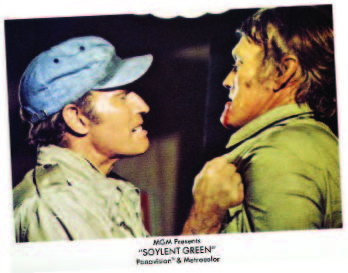
MGM Studios, Inc.
Spoiler Alert! Alas, as in Beneath the Planet of the Apes and The Omega Man, Heston proves once again that not even Moses can stop Earth’s inevitable final sunset.

Mandate Pictures/Point Grey Pictures/
Columbia Pictures
This is the End • 2014
The book of Revelation as interpreted by Seth Rogen and James Franco, who drove Franco’s neighbors in Silver Lake half-mad using his own home as the shooting location for his thoroughly entertaining, blisteringly funny, over-grown adolescent satire of the Biblical Apocalypse.
The ensemble cast, all playing themselves, includes Emma Watson, Jonah Hill, Craig Robinson and Danny McBride. A wild and wooly pastiche of 2012, The Exorcist, The Rapture, Night of the Living Dead, and The Player, the film is fueled by a breakneck series of show-biz jokes and special
effects. Wait I know that guy! Really? Who don’t you know in this movie?
CUTTING IT CLOSE
Calling these films “cliffhangers” would be underselling the consequences if things were to go bad. But (yeah!) the species squeaks through in the end…

Paramount Pictures Corp.
Crack in the World • 1965
No end-of-the-earth binge would be complete without at least one great “bad” movie. Dana Andrews plays a middle-aged, recalcitrant scientific genius who devises a way to provide limitless geothermal energy to the human race…by driving a nuclear bomb into the earth’s magma. It’s a bad idea on so many levels. The star of Academy Award winners like Otto Preminger’s Laura (1944) and William Wyler’s The Best Years of Our Lives (1946), Andrews proves one of the cardinal rules of the Screen Trade: The higher an actor may rise, the farther he may eventually sink. Wait I know those guys! Co-starring in Crack In the World are Janette Scott and Keiron Moore from 1963’s Day of the Triffids, another piece of sci-fi silliness, featuring an invasion of giant parasitic motile plants.

Universal Pictures
Colossus: The Forbin Project • 1970
Every end-of-the-world binge list also needs a movie almost no one remembers, or has even heard of. This isn’t exactly the end of the world, just of the world as we know it. Under the direction of Dr. Charles Forbin, the planet’s greatest computer scientist, the U.S. government builds a HAL9000/IBM Watson-type Frankenputer, names it Colossus, and puts it in charge of all the nukes. The Russkies swipe the recipe, build one of their own, and name it Guardian. Colossus detects the other system and, under threat of atomic annihilation, demands that the two of them be linked, at which point it begins dictating to the human race. Free will, we are reminded, is merely an illusion. It’s a marriage made in Orwellian Cold War Heaven. Director Joseph Sargent (who passed away at age 89 in Malibu just before this past Christmas) was four-time Emmy winner, and one of the most prolific and versatile feature film and episodic television directors of the past 40 years. Wait I know that guy! Dr. Forbin is played by Eric Braeden, fresh off the hit show The Rat Patrol and destined for soap stardom as Victor Newman on The Young and the Restless.
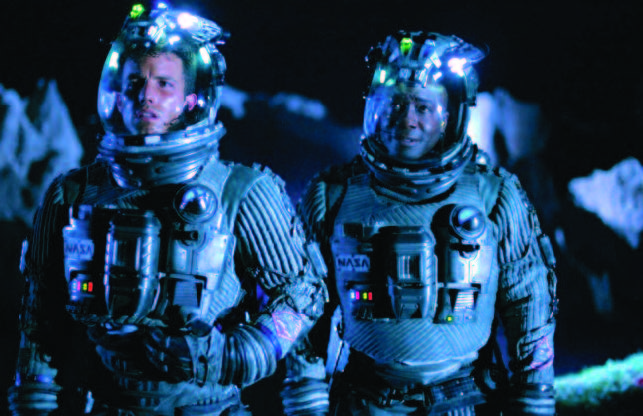
Touchstone Pictures/Buena Vista Pictures
Armageddon • 1998
Directed by sorcerer Michael Bay. His third blockbuster following the success of the Will Smith/Martin Lawrence buddy movie Bad Boys, and Nic Cage/Sean Connery white knuckle action fest The Rock. Starring Bruce Willis, Ben Affleck, Billy Bob Thornton and Liv Tyler. Despite its summer release just 10 weeks after a strikingly similar big-budget sky-is-falling film, Deep Impact, Armageddon went on to edge out Saving Private Ryan as the year’s worldwide box-office champion, making $553 million. Deep Impact, co-starring Robert Duvall, Morgan Freeman, Tea Leoni and Elijah Wood, was equally riveting, and featured slightly better scientific references. But since only one “disasteroid” movie can make the cut, I give Armageddon the slight edge for its frantic (but binge-worthy) pacing, and Bay’s often sly sense of humor. If a rock the size of Texas were headed for earth, I’d be okay launching Bruce Willis and Ben Affleck into space. Some might argue it’d be a good idea even if there were no asteroid. But putting an unhinged Steve Buscemi on the same flight? Sheer Bay-esque genius. Armageddon was shot in just over 100 days, and didn’t get much love from the critics—Roger Ebert included it on his all-time “most-hated” list. Another reviewer described it as “a machine gun stuck in firing position for 2 1/2 hours.” All of which earn Armageddon a special place in the binge.
THOSE PESKY ALIENS
Apparently, extraterrestrials just can’t get enough of us. Or perhaps it’s the other way around. Whatever the case, each of my three picks either generated a remake or sequel that measured up the original.
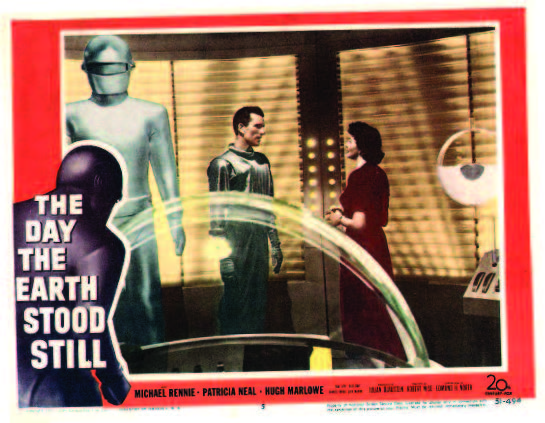
20th Century Fox
The Day the Earth Stood Still • 1951 & 2008
The Cold War is interrupted by the arrival of the alien Klaatu, portrayed by stately Michael Rennie and his killer-robot sidekick Gort. Klaatu delivers an ultimatum: Join the universe in peace or be reduced to a “burned-out cinder.” Patricia Neal is the terrestrial quasi love interest. The 1951 original was directed by Robert Wise, an Olympian of the American cinema who had first gained fame for his editing of Citizen Kane. Wise would lend his directing talents to West Side Story, The Sound of Music and The Sand Pebbles in the 1960s. In the late-1970s, Wise’s wife (a huge Star Trek fan) convinced him to direct Star Trek: The Motion Picture, initiating a movie franchise that continues to this day. The music for the 1951 film was supplied by Bernard Hermann, better known for his work in Taxi Driver and the Hitchcock classics Vertigo, Psycho and North By Northwest. The 2008 remake of The Day the Earth Stood Still, starring Keanu Reeves post-Matrix along with Jennifer Connelly, was directed by Scott Derrickson (who’d cut his teeth in the horror genre) is very entertaining—as it should be given an $80 million budget. The Cold War premise is abandoned in favor of mankind’s poor environmental stewardship. Klaatu threatens to eradicate humans so that the planet’s other creatures may thrive. (There go real estate values.) Spoiler Alert! Neither version offers a translation of the film’s three iconic words: “Klaatu Barada Nicto.”
(The) War of the Worlds • 1953 & 2005
Another George (When Worlds Collide) Pal masterpiece of old-school organic special effects compositing, animation, and model making—here in collaboration with Byron Haskin—the 1953 original was shot in “3 Strip” Technicolor. This involved three separate negatives for red, blue and green, and used a camera that weighed in at a quarter-ton. The concept of the manta ray/cobra Martian machines was the idea of Japanese-American master Art Director Albert Nozaki, who was to Hollywood model engineering what Larry Shinoda (designer of both the Corvette and the Mustang) was to Detroit. Full disclosure: I’m a complete Nihonophile (admirer of Japanese culture)…I drive a white 2012 Scion iQ, which bears an uncanny likeness to a Star Wars imperial storm trooper’s helmet, and from April to October, a white 1995 Mazda Miata, the original model with the flip-up round headlights. When Steven Spielberg took on the challenge in 2005 of remaking the Mount Everest of sci-fi pictures, he pulled out all the stops. The original George Pal production had been limited by its budget to create the genuine H.G. Wells conception of the Martian tripods. Spielberg had the funds, as well as the creative talent and modern technology, to realize them. Spoiler Alert! My grandfather owned a car dealership in Jersey City, so it was kind of cool watching neighboring Bayonne get vaporized.
Whichever version you prefer, you’ll probably share my frustration with the critical, inscrutable logical flaw in both the original picture and the remake: Any alien armed with the advanced science and technology to actually invade Earth would be able to understand terrestrial biology, and to have synthesized antibiotics and antivirals for themselves. However, in defense of Wells, he penned The War of the Worlds in 1898, when practically the only “medicines” known to mankind were tinctures of mercury, laudanum, cocaine, and aspirin. Penicillin wasn’t discovered by Alexander Fleming until 1928. I still prefer this premise to that of Independence Day, a very watchable movie where Will Smith and Jeff Goldblum save the planet with a laptop virus. How lucky we were that the aliens ignored all those annoying McAfee pop-ups, right?
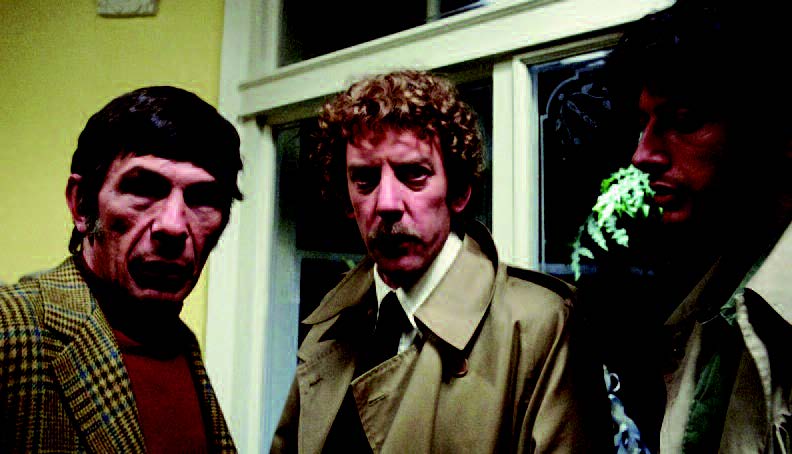
Allied Artists Pictures/United Artists
Invasion of the Body Snatchers 1956 & 1978
The Eisenhower-era original has long been considered to be the ultimate “Red Menace” paranoia picture. Shot in super-sharp, high-contrast “Chem-Tone” film noir black and white, the 1956 version is carried by Kevin McCarthy, whose over-the-top wide-eyed look of panic and confusion is sublimely demented. The 1978 remake, shot on location in San Francisco, is stylistically 180 degrees from the original, with soft, low-key pastel colors, fishnet lens filters, and director Philip Kaufman’s smart casting choices of Donald Sutherland, Veronica Cartwright, Jeff Goldblum and the recently departed Leonard Nimoy. Is it me, or do they all look a little like aliens? Thomas Jefferson wrote “The price of Liberty is eternal vigilance.” Something to think about when you watch Invasion.
Men In Black • 1997, 2002 & 2012
Buddy cops/secret agents J and K take on the bad guys from out there…with a little help from the many who’ve been living here (apparently, since the 1960s). Will Smith and Tommy Lee Jones strike me as a kind of cross between Mel Gibson and Danny Glover’s Lethal Weapon characters and Robert Vaughn and David McCallum in The Man from U.N.C.L.E. An unlikely pairing that works again and again. In I and II, Rip Torn portrays the indifferent, world-weary chief of the MIB Agency to sardonic perfection. The standout support player in MIB I, however, was Linda Fiorentino as the sexy coroner. (Be still, my heart. I’ve always had a thing for her, ever since Gotcha with Anthony Edwards.) Lara Flynn Boyle and Rosario Dawson play the female leads in MIB II, while Emma Thompson replaces Torn in the 2012 three-quel MIB III. The time-travel plot of III features Josh Brolin doing a dead-on impression of Jones as a young agent. Wait I know that Guy! In MIB I Vincent D’Onofrio plays the perfectly freakish, psychotic evil alien cockroach.
Editor’s Note: Luke Sacher has worked in the motion picture and television industry since 1982 as a cinema-tographer, editor and writer, primarily of documentary features. Among his credits are: Radium City (1987), which was selected to the Lincoln Center Film Festival; Who Killed Adam Mann? (1991), winner of a 1992 DuPont-Columbia Silver Baton; AIDS, Blood and Politics (1993) for PBS/Frontline; Jerry Lewis: The Last American Clown

